The mere fact that urea is indispensable in agriculture as a principal source of nitrogen (an essential condition for plants’ growth) makes it an important component. This multi-purpose fertilizer is popular because of its high nitrogen levels and affordability. In this manual, we will attempt to give you the clues behind bulk urea through studying its pros, uses and effects on crop yields, and soil fertility. This comprehensive overview serves as a guide to seasoned farmers, agronomists or just any person with interest in sustainable farming practices on how they can incorporate urea into their fertilization strategies effectively. Welcome to this discussion about the science, benefits and uses of one of the most significant modern agricultural inputs.
Why Choose Bulk Urea as Your Go-To Fertiliser?
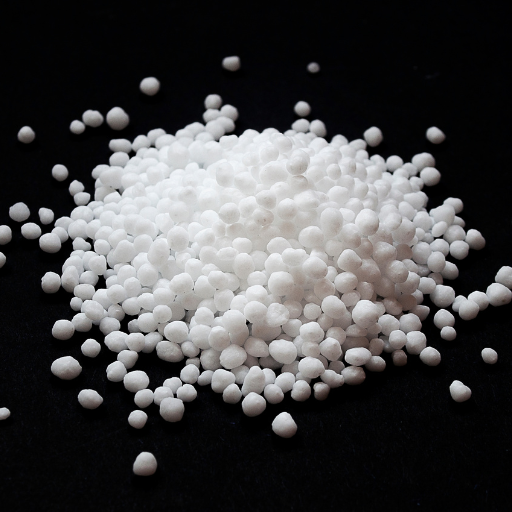
Bulk urea is an effective and powerful fertilizer due to its high content of nitrogen. In addition, buying in bulk comes with cost savings and convenience that reduce the need for frequent re-stocking and make large scale farming easier. Urea can be used in different soil types and climates to improve crop yield and enhance soil health if applied correctly. Therefore, all these factors indicate that bulk urea is a wise, cheap and efficient way for farmers to increase their field’s fertility.
The importance of Nitrogen in Plant growth
Nitrogen is an essential nutrient involved in plant growth processes. It is a constituent of amino acids which are the building blocks of proteins as well as chlorophyll, the green pigment responsible for photosynthesis. Photosynthesis entails converting sunlight into chemical energy which drives growth processes within plants. Low levels of nitrogen induce stunted growth, leaf yellowing (chlorosis) and reduced crop production.
it’s important when using urea as a source of nitrogen to know its chemical composition and how it interacts with the soil. Urea ((NH₂)₂CO) contains approximately 46% nitrogen by weight among other fertilizers making it one of the most concentrated sources available today. When added to soil, urea reacts by hydrolysis catalyzed by an enzyme called urease where it gets converted into ammonium (NH₄⁺) then nitrate (NO₃⁻), which can easily be taken up by plants.
Main technical parameters must necessarily be taken into account:
- Soil pH: Soil pH should be around 6-7 for optimum efficiency of urea application since extreme alkalinity or acidity can affect the conversion process leading to decreased availability of nitrogen.
- Temperature: Urease activity and subsequent rates of nitrogen conversion take place under enzymatic control with improved efficiency at elevated temperatures (50-90°F/10-32°C).
- Moisture: Adequate soil moisture enables urea dissolution and subsequent plant uptake. However, in excess it may result into nitrogen leaching and thus reduce efficiency of these compounds.
- Application Rate: Recommended application rates change depending on crop type, soil fertility, and certain growth stages. Over-dosage can bring about nitrate pollution and environmental hazards.
Knowing this helps maximize the benefits of urea for increased plant growth and better yields.
Advantages of Urea 46% Nitrogen Fertilizer
Urea 46% nitrogen fertilizer has several advantages regarding its use in agriculture.
One big advantage is that because it has high percentage of nitrogen more crops will need less amounts to meet their nitrogen needs. This reduces the amount of labor spent on applying fertilizers since it is more concentrated.
On top of that, urea is water soluble which eases its application making plants to readily absorb it. When degraded by urease into ammonium and nitrate ions, they become easily available for utilization by plants as growth components.
Moreover urea is flexible enough to cover diverse soil types and species varieties. Ensure the following in order to optimize its usage with reference to technical parameters:
- Soil pH: Maintain a soil pH value between six (6) and seven (7) for efficient hydrolysis of urea thereby maximizing nitrogen availability.
- Temperature: Apply at warm soil temperature between 50-90°F (10-32°C) range so that there can be an increase in the activity level of urease necessary for conversion.
- Moisture: Keep sufficient moisture levels in soils when dissolving ureas without much leaching away therefore maintaining higher efficiency.
- Application Rate: Vary with crop type, soil fertility levels, or stage of development being careful not to overdo this through avoidance of both environmental pollution and toxicity caused by excessive nitrogen supply.
By varying these factors, the urea which is rich in nitrogen 46% can be used to increase crop productivity and encourage sound plant growth.
What to Consider When Purchasing Bulk Urea Fertilizer
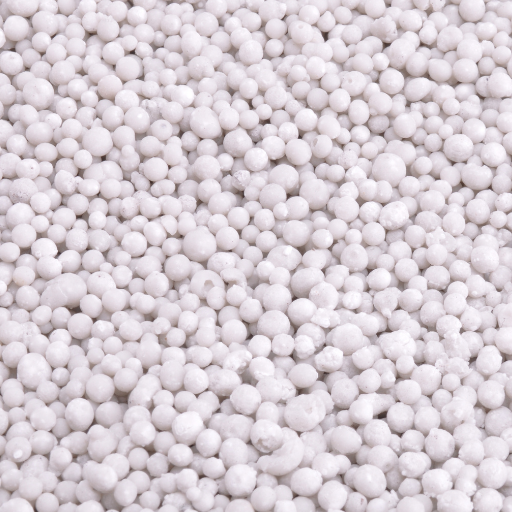
High value and effectiveness of bulk urea fertilizer purchasing demand that a number of crucial factors are taken into account. A good starting point is to consider the reputation and dependability of the supplier by checking for reviews and certifications that guarantee quality and consistency in their product range. Secondly, size and uniformity of granules are other attributes that need be considered as they determine how easy it is to apply them and how uniformly these fertilizers can be distributed across the field. In addition, there is also need for assessment on packaging options and storage conditions aimed at protecting the integrity of urea while avoiding moisture absorption. While cost remains critical, it has to be weighed against quality of the fertilizer as well as reliability from service provider. Lastly, logistics issues such as delivery options, shipping costs, lead times should be sorted out to ensure availability during peak farming season.
What To Look For When Assessing Urea 46% N Quality?
When assessing Urea 46% N quality there are several key parameters which must be borne in mind:
Purity: High-quality urea should contain a nitrogen content no less than 46%, with minimal biuret content preferably below 1% so that sensitive crops do not get harmed by its toxicity.
Uniformity in granule size: Uniform granule sizes ensure even distribution and optimum dissolution rates; generally, granules range between 2-4 mm.
Moisture level: In this case, low moisture content (typically <0.5%) prevents caking but allows smooth application.
Solubility: Efficient nitrogen release calls for high solubility in water so that urea dissolves easily without leaving behind any residues.
Contaminants: Impurities like heavy metals or non-Nitrogen compounds should have relatively small quantities if present at all; acceptable levels of contaminants could be regulated or specified through agricultural standards set aside by each nation respectively.
Flowability: Free-flowing property implies that urea is not clumpy; this facilitates easy handling, storage and application.
These parameters must be assessed to ensure the fertilizer’s effectiveness, safety and reliability for agricultural use.
Selecting the Right Packaging for Your Urea Fertilizer Needs.
Choosing appropriate packaging for urea fertilizer is crucial in its preservation of quality and efficiency during storage and transportation. Packaging should guard against moisture penetration, mechanical damage and contamination. Packaging materials are often composed of polyethylene (PE) or polypropylene (PP) bags with inner linings that enhance their resistance to moisture. Moisture barrier properties make PE bags preferred choice while PP bags are known for their durability/strength.
In technical terms, the following must be considered when selecting packaging:
Moisture proof: The packing needs to provide protection from humidity so that urea does not become lumpy due to increased moisture content which may occur through normal weathering processes, as well as in course of its transportation (Sahota 2009).
Strength & Durability: It is important that packaging used can withstand different handling activities plus transport without tearing easily. Bag sizes normally range between 50 kg to one tonne depending on a customer’s requirements related to urea consumption rate.
Ease of Handling: A free-flowing nature of urea will require a specific kind of packaging that allows it to be filled in easily as well dispensed out smoothly as needed by users. If necessary, bags should have features whereby they can be opened and resealed conveniently.
UV Protection: Storage outside would necessitate using UV inhibitors in packagings so that sunlight cannot destroy them over time.
Environmental Concerns: Some options offered focus on recyclability or biodegradability according with sustainable practices in agriculture (Van der Ploeg et al., 2010).
By considering these factors you can ensure the urea fertilizer remains effective and safe from the point of production to its ultimate application in the field.
Strategies for Effective Bulk Urea Application
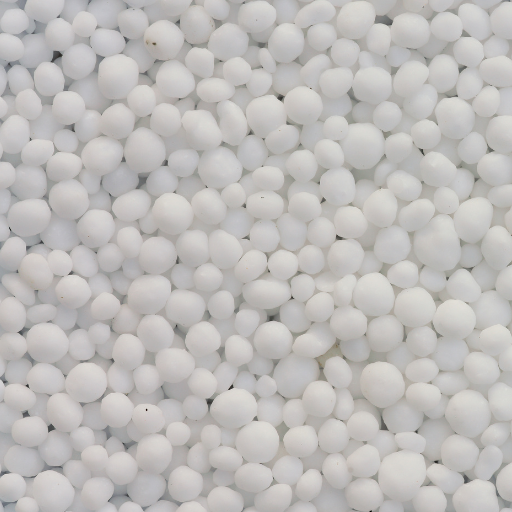
For successful mass urea placement, it is important to time the fertilizer application properly, which is usually immediately before or during growing season when nitrogen utilization by crops is at its peak. Precision farming techniques can also be employed; through soil testing, we get to know how much nutrients exactly are needed in the field hence proper use of urea and minimizing wastage. In addition to that, urea inhibitors could also be used whereby ammonia formation from urea is reduced thus little loss of nitrogen occurs through volatilization. Another method of reducing nitrogen loss and promotion of nutrient uptake by crops involves the incorporation of urea into the soil rather than surface application. In the same way, calibrating spreader equipment so that there is uniform distribution can help prevent excess application which may lead to environmental damage due to nutrient runoff.
Choosing a Spreader for Urea Distribution
To choose a spreader for your farm field involving several key types of devices according to the peculiarities and requirements set for these areas one should pay attention on two main kinds: broadcast spreaders and drop spreaders.
Broadcast Spreaders: These are great for large area applications because they have large distribution width meaning more space will be covered within a short period. They operate in such a manner as spreading over an area just like fun thus making them efficient but if not properly adjusted they can result into unevenness in taking action.
Drop Spreaders: For greater precision applications, drop spreaders allow urea to fall directly below them giving greater control over where it goes. Such type provides evenness although slower and covers small areas at any given time.
When making this choice, take into account the size of your acreage, plant food requirements and relief features present on site. Also ensure that you select a calibration friendly distributor so that you do not waste manure while maintaining uniformity in your work.
Timing and Techniques for Optimal Fertiliser Deployment
The timing and techniques for optimal fertilizer deployment are crucial for maximizing crop yield and reducing nutrient loss. Applying urea fertilizer at the right time can significantly influence its effectiveness. Ideally, urea should be applied just before a rainfall or irrigation event to help it penetrate the soil and reduce volatilization losses. The best time to apply is during cooler parts of the day, usually early morning or late afternoon, to minimize evaporation.
Several techniques can further optimize fertilizer deployment:
- Split Application: Instead of a single large dose, split the application of urea into smaller doses over the growing season. This ensures a steady nutrient supply and reduces the risk of leaching and runoff.
- Band Application: Placing urea in bands near the root zone enhances nutrient uptake and minimizes contact with the soil surface, thereby reducing volatilization. This technique is especially effective in row crops.
- Incorporation: Incorporating urea into the soil shortly after application, either by tillage or using irrigation, can reduce nitrogen loss through volatilization and improve nutrient uptake.
- Use of Urease Inhibitors: These chemicals slow down the conversion of urea into ammonia, thereby reducing nitrogen loss. Products containing the active ingredients NBPT (N-(n-butyl) thiophosphoric triamide) such as Agrotain can be highly effective.
- Controlled-Release Fertilizers: These fertilizers are coated to release nutrients gradually over time, matching the nutrient release with the crop’s needs. Products like ESN (Environmentally Smart Nitrogen) provide a long-lasting nitrogen source.
Technical Parameters:
- Volatilization Loss: Typically, unincorporated urea can lose 30-50% of nitrogen, which can be reduced by 20-30% using urease inhibitors.
- Application Rate: Depending on the crop and soil conditions, urea application rates generally range from 50-200 kg/ha.
- Incorporation Depth: Incorporating urea into the top 5-10 cm of soil can significantly reduce nitrogen losses.
Adopting these best practices ensures that the urea fertilizer is used efficiently, promoting healthier crops and reducing environmental impact.
Urea and Water: The Solubility Factor in Application
When considering the solubility of urea in water, it is important to understand that urea is highly soluble, dissolving readily when mixed. This characteristic is advantageous for agricultural applications, especially in irrigation systems, allowing for uniform distribution of nutrients.
Technical parameters related to urea solubility include:
- Solubility Rate: Urea has a high solubility rate of 1080 grams per liter at 20°C, which means it dissolves quickly in water.
- Temperature Impact: Higher temperatures increase the solubility of urea. For instance, at 100°C, the solubility of urea in water rises significantly.
- Application Method: Urea solutions can be applied through fertigation systems, offering controlled application rates and better nutrient absorption.
Using water to dissolve urea ensures efficient application and reduces loss due to volatilization, especially when applied through soil injection or fertigation systems.
Maximizing Efficiency with Bulk Urea: Packaging and Application Tips
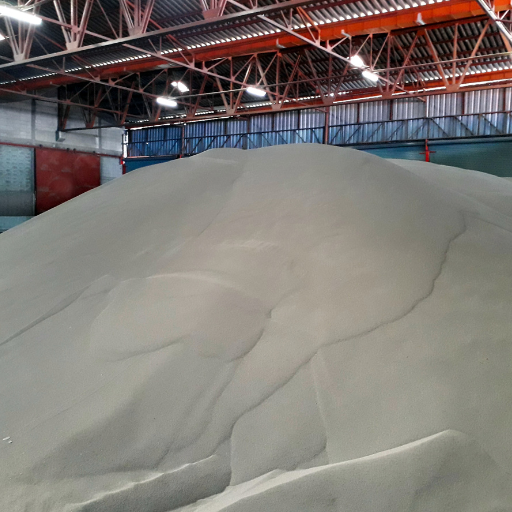
For bulk urea applications to be most efficient, it is necessary to pay attention to both packaging and application strategies. Packaging should be of high quality and must have moisture resistant properties so as to avoid lumping of the urea and maintain a good flowability of the product. In addition, storage containers such as sealed bins or tanks can minimize the exposure of urea to moisture. Correct calibration of equipment is crucial in achieving uniform distribution during application. Similarly, employing precision agriculture practices like variable rate technology can enhance efficiency in applying urea through adjusting its application rates depending on different field zones’ needs. It also helps reduce wastage and environmental impact.
Optimal packaging solutions for bulk Urea: Pallets through 1000kg bags
What are the right packaging solutions for bulk urea? There are many options available for use, such as bags, intermediate bulk containers (IBCs), and bulk carriers among others. For instance, High-density polyethylene (HDPE) bags that come in sizes between 25 kg and 50 kg can be used to pack urea. Frequently used for larger quantities are bags ranging from 500 kg up to 1000kg which offer a compromise between manageability while providing enough volume for usability purposes. To prevent humidification affecting clumping or spoilage of urea, some large bags have moisture barriers inside them Protection against clumping due to humidity is achieved by these bigger packs having moisture barriers lined on their inner surfaces. Pallets may support several smaller bags or one big bag thus helping in handling and transportation process2 . Alternatively, special liners may be used when shipping bulk amounts by rail or road so as to prevent contamination while keeping the quality intact during transit.A good packing guarantees free flow form and easy handling of the materials while minimizing product lost or environmental effects.
Best Practices for Spreading Urea In Your Paddock Or Field
There are various best practices that you should follow to ensure urea is spread effectively on your paddock or field. Soil testing must be undertaken first in order to know how much nutrients are required and the right amount of urea application that is safe from nitrogen leakage due to over use. Further, a calibrated spreader can also guarantee an even distribution. Techniques like overlapping swath patterns could also minimize streaking and promote uniform coverage. It is advised that the urea should be applied under satisfactory soil moisture conditions but not in wet soils and preferably before a rainstorm in order for the urine to mix well within the land hence reducing nitrogen losses. The timing of its application is equally important where it should ideally be done during active crop growth periods when plants can take up the provided nitrogen easily.Shortly, split applications can boost NUE and reduce losses.Ultimately, this will help delay urea hydrolysis besides minimizing volatilization losses especially in warm climatic regions or sandy soils.
Technical parameters to consider:
- Soil pH: Aim for a pH range of 6-7 to enhance urea efficiency.
- Application Rate: Typically 50-150 kg/ha, adjusted based on soil tests and crop requirements.
- Spreader Calibration: Ensure accurate and even spreading by calibrating equipment regularly.
- Timing: Apply before forecasted rainfall or irrigate post-application.
- Inhibitors: Use urease inhibitors such as N-(n-butyl) thiophosphoric triamide (NBPT) to reduce nitrogen losses.
Soluble urea applications: Techniques for dissolving and applying
Key techniques should be followed to increase the efficiency of soluble urea by dissolving and applying it. Firstly, dissolve urea in water at a recommended rate of 1 kg per 1 liter of water, stirring until fully dissolved. This solution can then be used for foliar applications or fertigation. For foliar applications, apply during cooler parts of the day to prevent leaf burn with a solution concentration of 0.5-2%. Use a fine atomized spray while ensuring uniform coverage. In fertigation, one should inject the urea solution into an irrigation system that allows for accurate application directly to root zone. pH value has to be adjusted so as to neutralize the solution (pH7).
Technical parameters to consider:
- Solution Concentration: 1 kg urea per 1 liter of water for stock solution; dilute as needed for foliar sprays (0.5-2%).
- Spray Application: Apply during early morning or late afternoon to avoid leaf burn.
- pH Adjustment: Adjust solution to a neutral pH of 7 to optimize nutrient availability.
- Equipment Calibration: Calibrate sprayers and injectors regularly to ensure even and precise application.
- Storage: Store urea solution in a cool, shaded area to prevent degradation.
How to Efficiently Obtain Bulk Urea for Agriculture or Industrial Use
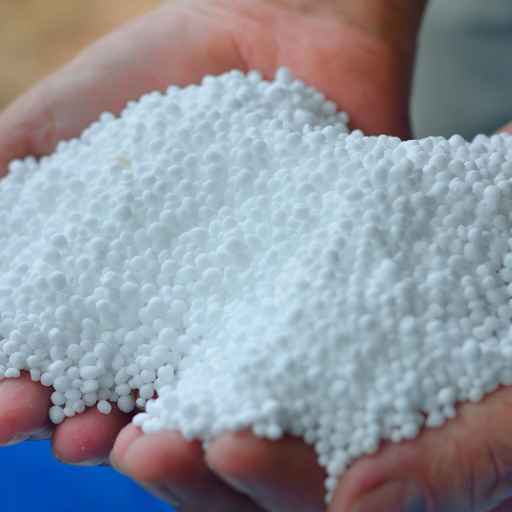
If you want to get bulk urea for farming or other industrial purposes, begin with finding suppliers who have a history of providing high quality products. It is important that one should compare prices from different suppliers to achieve optimal rates without any compromise on quality. Suppliers such as; Another advantage of working with a supplier over the long term is receiving priority service and possible discounts. On top of that, ensure that you purchase urea that complies with industry standards and regulations for it to be effective and safe when used.
The role detailed specifications play in quote requests
Detailed specifications are very important in quote requests since they give the suppliers precise information regarding product requirements thereby ensuring received quotes are accurate and comparable. In fact, these details help avoid misunderstandings or discrepancies that can lead to wasteful use of resources or substandard goods. Furthermore, through enabling better planning and resource allocation, there are more detailed specifications which enable suppliers determine their costs and timelines with confidence. This makes sure that quotes given match project needs adequately.
Exploring the Versatility of Urea Beyond Fertilizers

Urea has vast applications beyond being a fertilizer. Urea is applied in topical creams and ointments for treating different skin ailments like psoriasis, eczema and dry skin in the medical field. It acts as a humectant by enabling the skin to retain moisture and it improves absorption of other active ingredients. When it comes to industrial uses, urea is used as a starting material for the production of urea-formaldehyde resins which are commonly employed in adhesives, finishes, molded articles etc. Furthermore, urea finds usage in modern diesel engines’ DEF (Diesel Exhaust Fluid) systems. DEF decomposes harmful nitrogen oxides into harmless nitrogen gas and water vapor hence reducing their emissions. This extensive range of uses demonstrates how adaptable urea is across various industries.
Urea in Animal Feed: A Key Source of Nitrogen for Livestock
Urea is an indispensable source of nitrogen in animal feed particularly ruminants like cattle and sheep. Once consumed, microorganisms present within the digestive system hydrolyze the urea resulting into ammonia that serves as a form of nitrogen accessible for microbial protein synthesis. Through this process more protein can be supplied to animals thus increasing growth rates among livestock populations. Moreover, moderately-priced urea substitutes otherwise expensive traditional proteins sources without disturbing nutritional balance. To use urea properly with feeds involves formulation with due attention to preventing toxic hazards as well as ensuring optimal healthiness of all animals.
The Role of Urea in Industrial Applications and Manufacturing
Urea’s adaptability and efficiency make it play a great role in manufacturing processes or industrial applications worldwide One major application is its use as concentrated nitrogen source used in producing fertilizers thereby enhancing plant growth leading to increased crop yields albeit at higher costs compared to many other forms of N-fertilizers.Urea also forms parts of products such as adhesives, moulded items as well as finishing materials given its ability to provide water resistance and durability. In the automotive industry, it is a key component of diesel exhaust fluid (DEF) that helps to reduce nitrogen oxide emissions via selective catalytic reduction (SCR). Such varied uses demonstrate the importance of urea in boosting agricultural output, producing durable goods and promoting environmental sustainability.
Technical Grade Urea for Non-Agricultural Uses
Technical grade urea because of its high purity and consistent quality is broadly applied across numerous non-agricultural sectors. It finds general application in industry being used mostly in resin formulation such as adhesives, coating etc. where superior finishing or binding properties are required. In the pharmaceutical sector, this substance is a crucial stabilizer found in some medicines and beauty care products due to its moisturizing and keratolytic abilities.Urea also contributes significantly into the automobile industry especially when it comes to manufacturing DEF (Diesel Exhaust Fluid) which reduces harmful nitrogen oxides by selective catalytic reduction (SCR) using technical grade urea. The versatility and efficiency of technical grade urea make it an integral part of several industries thus driving both innovation and sustainability.
Reference sources
- University of Minnesota Extension
- Source Link: Guide to using urea as a crop fertilizer in Minnesota
- Summary: This guide offers detailed information on the application, usage rates, and storage of urea fertilizer. It covers essential aspects such as minimizing losses and maximizing nitrogen availability for crops, making it a comprehensive resource for effective urea fertilizer management.
- Syfert
- Source Link: Everything You Need to Know about Urea Fertilizer!
- Summary: This resource explains the properties and benefits of urea as a nitrogen-based fertilizer. It provides insights into application methods, how urea supports plant growth, and best practices for its use to ensure optimal agricultural outcomes.
- Cargo Handbook
- Source Link: Urea
- Summary: The Cargo Handbook entry on urea details its transportation, storage, and usage as a fertilizer. It highlights the importance of proper handling to prevent contamination and ensure efficacy, offering valuable information for managing bulk urea in agricultural settings.
Frequently Asked Questions (FAQs)
Q: What is urea and why is it used as a fertiliser?
A: Urea, with the chemical CAS number 57-13-6, is a high-nitrogen fertilizer, known for its efficiency in providing nitrogen to plants. Produced through the reaction of ammonia and carbon dioxide, urea contains about 46% nitrogen (urea 46%N), making it an essential compound for the growth of plants. Its high nitrogen content is critical for photosynthesis, leading to healthier and more abundant crops.
Q: How does granular urea compare to prilled urea?
A: Granular urea is larger and harder than prilled urea, which consists of smaller, smoother particles (prills). While both forms are widely used in agriculture, granular urea is often preferred for direct application to soil due to its lower dust content and higher resistance to breaking down in storage. Prilled urea, on the other hand, is sometimes chosen for certain application methods such as aerial spreading or in solutions.
Q: Can I request a quote for bulk urea_direct purchases?
A: Yes, you can request a quote for bulk purchases of urea directly from suppliers or distributors. This is a common practice for businesses and large-scale agricultural operations looking to buy urea 46%N in multiple sizes, including 600kg bags or IBCs (Intermediate Bulk Containers). A fertiliser quote request will typically require details about the quantity, form (granular or prilled), and delivery location.
Q: Where can I shop with confidence for urea in the UK?
A: UK residents can shop with confidence for urea from reputable suppliers and distributors, such as Thomas Bell or Diamond Fertilisers. These suppliers offer a wide range of urea fertiliser products, including both granular and prilled forms, at wholesale prices. It’s important to check the business seller information, returns policy, payment details, and seller feedback before making a purchase to ensure a reliable transaction.
Q: What are the item specifics to look for when purchasing urea?
A: When purchasing urea, the item specifics to look out for include the nitrogen content (typically urea 46%n for high-nitrogen fertilizer), form (granular or prilled), CAS number (57-13-6), packaging size (e.g., 600kg, IBC), and whether the packaging is applicable (i.e., ensures the product is brand-new, unused, and in its original packaging). Also, verify if the urea is treated or untreated as per your application needs.
Q: How to find reliable supplier or distributor information?
A: To find reliable supplier or distributor information for urea or other fertilisers, check the business seller information provided on their websites or platforms where they list their products. This information should include business registration details, contact information, and ideally, some form of seller feedback or customer reviews. A visit to the physical location, such as 1 Heron Sq, Surrey, can also lend insight into their operations.
Q: What is the returns policy generally like for bulk urea purchases?
A: The returns policy for bulk urea purchases can vary between suppliers and distributors. Generally, returns are accepted for items that are in their original condition, unused, and with applicable packaging. It’s crucial to review the returns policy before making a purchase, especially for bulk items, to understand the process and any restocking fees should the product need to be returned.
Q: What payment details should I be aware of when purchasing urea in bulk?
A: When purchasing urea in bulk, be aware of the payment details such as accepted methods of payment, any upfront deposits required, payment terms (e.g., net 30 days), and if applicable, financing options. Many suppliers also require confirmation of business credentials before finalizing a wholesale transaction for products like granular urea or in larger quantities like 600kg or more.
Q: How does urea_direct contribute to the sustainability of agricultural practices?
A: Urea_direct contributes to the sustainability of agricultural practices by offering a nitrogen solution that is vital for plant growth while ensuring efficient nutrient use. By providing urea in forms that allow precise application (granular or prilled), farmers can minimize nutrient runoff and reduce the environmental impact. Moreover, urea’s production process captures carbon dioxide, which helps to lower the carbon footprint associated with its manufacture.






